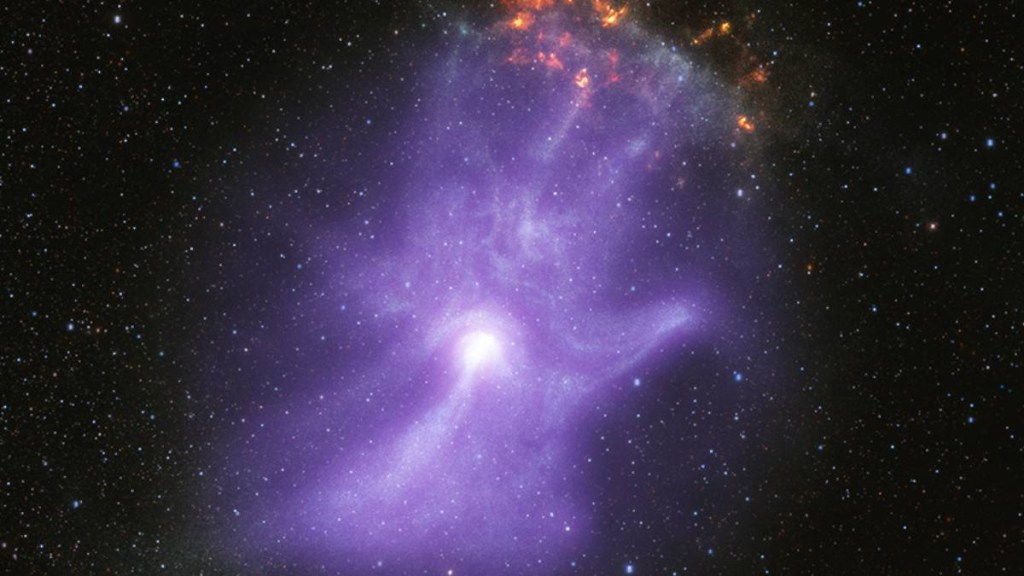In a thrilling space revelation perfect for Halloween, NASA’s powerful telescope has snapped a picture that looks like a skeletal hand reaching out in space. This strange formation, called MSH 15-52, was created when a massive star exploded, a phenomenon known as a supernova. This leads to the birth of a pulsar, which is a rapidly spinning and extremely dense leftover from the star.
As per reports, Pulsars have powerful magnetic fields which produce strong jets of charged particles and a powerful wind, creating something called a pulsar wind nebula. In the center of this eerie image is the pulsar, known as PSR B1509-58, which releases particles into space, forming a bright and glowing structure that looks like a human hand.
Researchers used NASA’s Imaging X-ray Polarimetry Explorer (IXPE) to study MSH 15-52 for about 17 days. This study provided new insights into the pulsar’s magnetic field and the direction of its X-ray jets. Roger Romani, the study’s lead author from Stanford University, explained, “The IXPE data gives us the first map of the magnetic field in the ‘hand.’ The charged particles producing the X-rays travel along the magnetic field, determining the basic shape of the nebula, like the bones do in a person’s hand.”
Josephine Wong, another co-author from Stanford, said, “We’re all familiar with X-rays as a diagnostic medical tool for humans. Here we’re using X-rays in a different way, but they are again revealing information that is otherwise hidden from us.”
The data from the space telescope showed that in certain parts of MSH 15-52, the polarization levels are very high, indicating minimal turbulence and straight magnetic field lines, especially in the fingers and thumb of the hand-like structure. However, there are turbulent areas, seen in the bright X-ray jet near the structure’s “wrist,” where particles gain energy.
Niccolò Di Lalla, another co-author, highlighted the significance of this discovery, saying, “We’ve delved into the life cycle of highly energetic particles surrounding the pulsar. This provides insights into the role of pulsars as particle accelerators.” MSH 15-52 is located 16,000 light-years away from Earth and was first detected by NASA’s Chandra X-ray Observatory in 2001.
